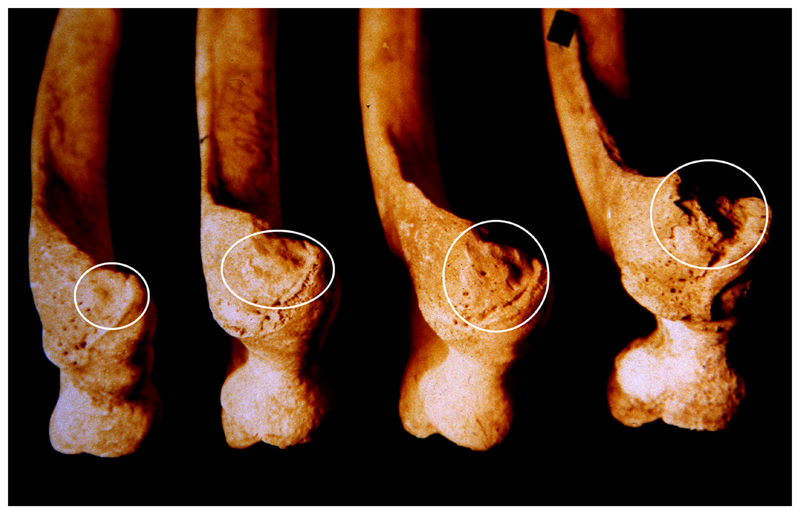Fig. 2.
Example of standards used to record entheseal marking variation for the common extensors origin, lateral epicondyle of distal humerus. Grade 1: no trace of marking visible (not illustrated). Left to right: Grade 2: small facet is visible; rim of facet is finely rugose and may be indistinct in places, and surface of facet is smooth. Grade 3: facet is larger and well bounded on all sides; rim may be slightly raised, and surface is smooth or finely rugose. Grade 4: facet is large, covering much of the surface of medial epicondyle; surface may be rugose or rugged, and border is unclear due to rugosity or surface destruction. Grade 5: osteophytes; a small protuberance below the edge of the medial epicondyle may be present.

